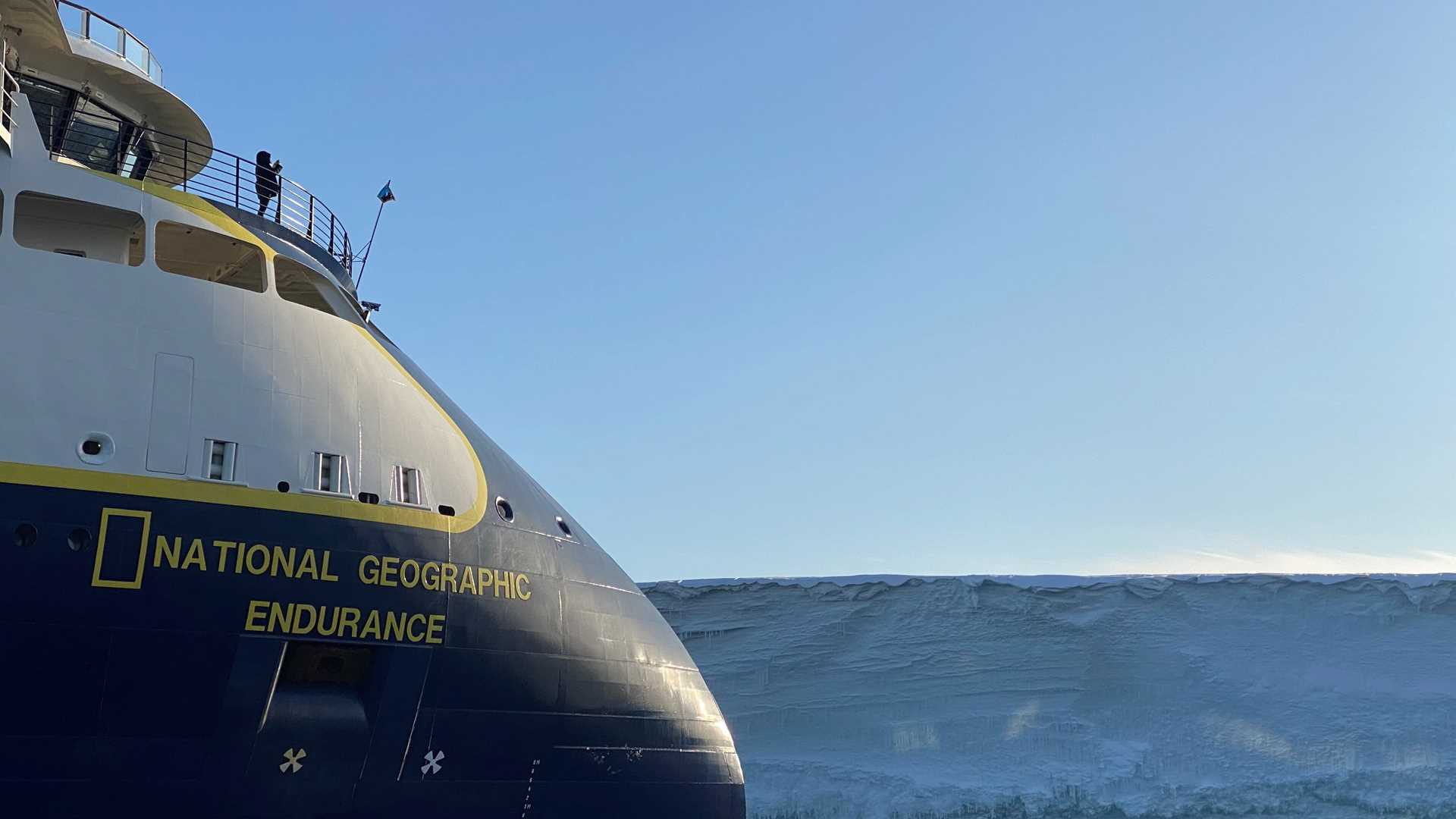A day at sea is a day of preparation for the adventures that are to come. We are learning from the presentations shared by the Antarctic expedition team about this inhospitable and yet alluring natural environment we are visiting. Through the eyes of our fellow shipmates, we are experiencing excitement in finding more wildlife in the air or at sea, delightful creatures that inhabit this frozen paradise. The day fills with lively conversations, updates on our navigation, card games, puzzles and binoculars—no one wants to miss the next wildlife sighting.
Later in the evening, the horizon lit up in spectacular fashion. We could see a long white band along port side. Could this be ‘The Barrier’? Yes, indeed it is! The Ross Ice Shelf was visible to the naked eye, growing bigger as we sailed towards it. This is the world’s largest piece of floating ice, covering over 240,000 square miles (630,000 km2); its flat, table-top surface rises above sea level by about 60 feet, though the thickness of the shelf is calculated to be about 1,200 feet. Discovered in 1841 by James Clark Ross’s expedition, it was known at the time as the Ice Barrier, an ice fortress that stopped ships from advancing southwards. However, we are venturing further south!
Our destination is the Bay of Whales, an indentation of the Ross Ice Shelf located on its western side. Blue skies and snow petrels accompany our sailing until we reach the further south position of this voyage: 78º44’14”S. Shortly after dinner, we load Zodiacs to cruise along the ice shelf. This is expedition at its best! A cold breeze blows from the ice walls but our hearts are content, admiring every detail on this white and blue landscape we are in. Also, the ocean is freezing just before our eyes; small platelets of ice form on the water’s surface, soon to become pancake-shaped ice floes. The exploration of Bay of Whales goes into the early hours of the following day; we have officially reached the Ross Sea and we cannot wait for more days like today.







